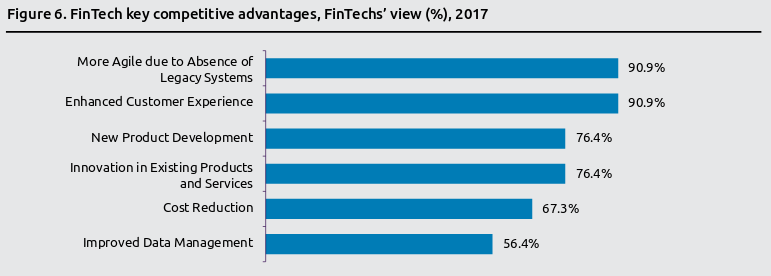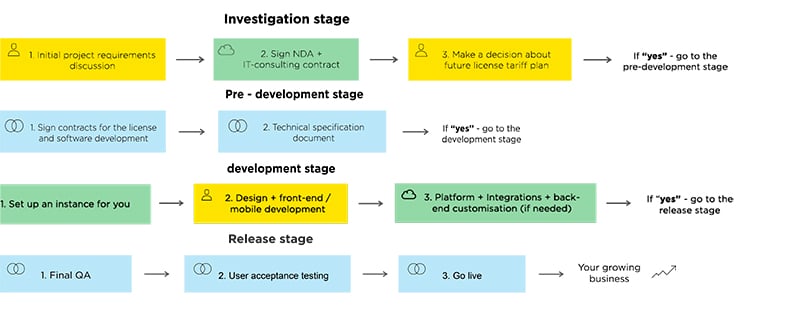Software development is always pivotal when it comes to creating a software solution aimed at disrupting its target market. In the past, this process allowed a programmer to write code for automating a procedure or solving a problem.
These days, the process is quite different since it relies on the joint efforts of programmers, users, testers, analysts, and architects. Over the years, FinTech software solutions became popular in different industries. Just like other software products, there are certain procedures involved in their development.
How Fintech Software is Useful in Retail
Retailers are realizing how effective FinTech software solutions are in terms of helping them run their stores. They use the solutions to manage their banking and other financial activities since money is key in their businesses. As technological trends in financial services change, retailers need the most recent software solutions to address their increasing needs.

If the financial technologies that retailers use fail to provide valuable information, they tend to seek new ones. Retailers also rely on FinTech Software to find a practical solution to their market needs. They seek the software solutions if they have maintenance issues in their existing financial technology-based systems. Through FinTech software development, retailers get the intensive support they need for their evolving business activities.
Steps Involved in Developing FinTech Software for Retail
The software development life cycle (SDLC) of FinTech software products used in the retail industry is crucial to both the engineer and retailer. It focuses on describing the precise software development stages involved in turning a FinTech software idea into an executable final product. The SDLC also aims at giving an order in which the engineers can implement these stages. Its stages are as follows:
Gathering and Analyzing Business Needs
As discussed earlier, retailers seek FinTech software products to address their business needs. Before the software engineers provide them with the right products, they need to gather and analyze their business needs. In this SDLC stage, the main focus is on the stakeholders (the retailers) and project managers (engineers and testers). To determine what the business needs are like, the project managers need to meet with the stakeholders frequently. Their goal is to find out how and where the retailer will use the software product and the data inputs or outputs required.
After successfully gathering the business needs, the project managers need to analyze them for validity. The analysis process also focuses on studying how the project managers can fit the business needs into the software product that is under development. To conclude this SDLC stage, the project managers should create a requirement specification document for mapping everything involved in the gathering and analysis activities.
Design
The software engineers use the requirement specifications (business needs) they analyzed in the previous phase to design the FinTech software. This stage helps to identify the hardware and system requirements that the software under development needs. In this case, the stage focuses on the type of machines or devices a retailer intends to install the completed FinTech software. It also helps to define the general system architecture. The testers usually develop a test strategy that aims at mentioning what they want to test and how to test it.
Coding
Coding forms a crucial part of the software development lifecycle of any program or system. This work begins once the project manager receives the system design documents prepared during the previous stage. Software developers usually divide the coding work into modules or units to simplify and fast-track it. It takes time to write code for a FinTech software. Developers may use resources such as an integrated development environment (IDE) program to write and format the code.

Fintech project development stages
Testing
Testing normally comes after the developers complete the coding work. The main focus of this stage is on the testers. These experts run tests on the written code with an objective of finding out if it has any errors or mistakes. The tests also help them to determine whether the product that is under development can effectively meet the gathered business needs of the target consumers (the retailers). Testers carry out functional testing such as acceptance testing, system testing, integration testing and unit testing during this SDLC stage. They also carry out nonfunctional testing.
Deployment
Once the product passes through the testing stage successfully, it is ready for deployment. This means that the project managers can now deploy it to the targeted customers (the retailers) for use. After releasing the product to the retailers, they usually conduct beta testing. Through beta testing, selected retailers (beta testers) get to use the product and see if it has any bugs. Final deployment can only happen when the software engineers fix any bugs that the beta testers found.
Maintenance
This SDLC stage focuses on providing support to customers (the retailers) who encounter problems when using the FinTech software. The software engineers will provide the needed support until the identified problem becomes solvable. Customers also have the chance to raise any concerns regarding their use of the software.
Final Thoughts
The SDLC stages discussed above focus on the procedures that a FinTech software product goes through before it reaches the customer as a high-quality product. It is important to note that every procedure requires inputs from different individuals. Furthermore, the procedures must rely on the retailers' business needs for guidance. Without the comprehension of the current problems that retailers are facing when using financial tech products, the software engineers cannot know the exact things to include in the FinTech software they're developing.








